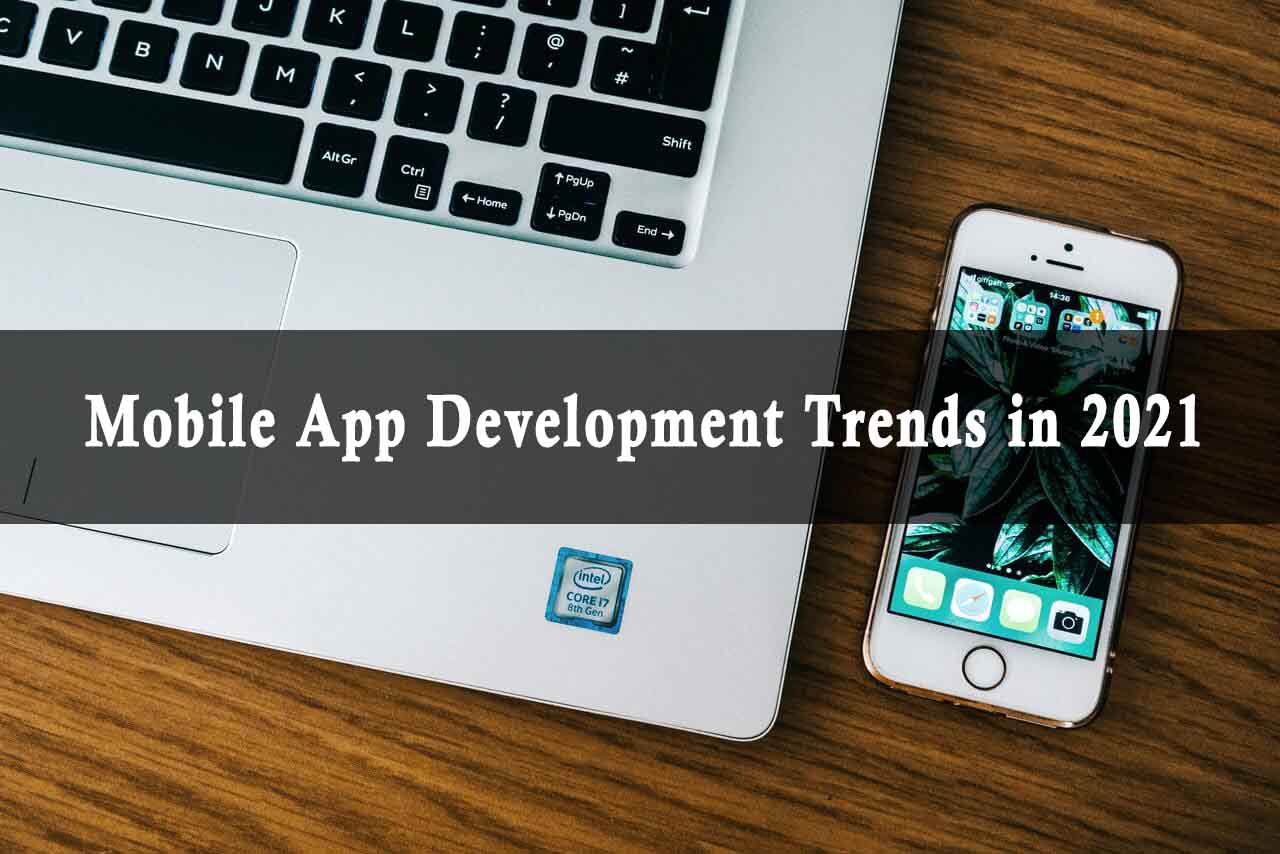Blog
CodeAspire > Blog > Top 10 mobile app development trends of 2021

- CodeAspire
- Jan 29, 2021
Top 10 mobile app development trends of 2021
Every year brings its share in trends about technology that pushes the envelope of what can be achieved in mobile app development. If you want to keep up with the mobile application industry, it's important to keep an eye on what to do next year, and this post will help you with it! We are one of the top trends shaping mobile app development in 2021.
- Subscription-based services
- 5G technology
- m-commerce
- Blockchain
- Wearables
- Augmented Reality
- Event streaming
- Flip phones
- Edge computing
- IoT
- Cloud-native
- Epilogue
1. Artificial Intelligence: Chatbots and Voice Assistant-
AI has had a presence in our mobile devices for almost a few years now, bringing in automated assistants who can perform tasks and interact with real people, such as Siri from Apple. These technical assistants are improving every year by learning user behavior to provide a more accurate and personalized experience.
For example, Google recently started an AI project called Google Duplex that allows users to make reservations by making phone calls to their phone's Google Assistant, simulating the human voice, and a fluent conversation with a person on the other side of the line Allows to do.
2. The Internet of Things(IOT)
Nowadays, almost every gadget or home appliance you can think of is being built with internet access. And not only while warming up the vex, it becomes an integrated system to check the Red Sox's final game score on a microwave screen, but also to connect to the rest of the home and electronic devices that can be managed by your smartphone is. Jokes aside, those called "smart homes" are beginning to grow in numbers and are becoming a game-changing theme for mobile development. This is because there is no better way to control your home behavior than using your phone. Imagine reaching (or leaving) your home and being able to open doors, open windows and turn on the lights with just one touch. Those things are now possible and are being improved to allow home devices to perform more complex tasks, managing them with mobile applications such as Apple's "Home". In fact, according to IDC, investment in IoT is expected to cross the $ 1 trillion mark by 2022, and mobile application development goes hand-in-hand for that purpose.
3. Augmented Reality
Augmented Reality (AR) technologies are not new, but they are getting better and wider every year, reaching unprecedented levels. Mobile games such as Pokémon Go made it so famous that thousands of people interacted with virtual objects and creatures that do not exist but were displayed on the screen for AR. However, applications for this technology can also advance into business-critical areas such as safety, health, training, industrial maintenance, and more.
4. Mobile Wallets-
There was a time when we had to pay for everything in cash. Credit and debit cards appeared, so we should not bring many bills in our pocket. But there is a common denominator, wallet. The thing that we usually keep in our pocket has not changed yet. The wallet of the future will be your mobile phone, and that future will begin to form in the present. Mobile payment systems such as Apple Pay are increasing in usage and popularity. According to EMarketer, around 46% of mobile users worldwide will use the mobile payment app by the end of this year. Maybe one of the most advanced markets in this sense is China, where the upper and middle classes are using mobile wallets for their daily purchases, but the word is that even some beggars to ask for money Famous use WeChat app. In this context, mobile developers must be prepared to add mobile payment capabilities to their toolbox. Apple has payments, but it is just one in the growing market of mobile-ready payment gateways. Also, like every other subject, when something becomes more and more popular, the associated features and capabilities increase. For example, elements such as biometric and multi-factor user authentication in apps should be considered for mobile app developers.
5. Accelerated Mobile Pages (AMP) and Progressive Web Applications (PWA)
Creating a fast and user-friendly website that performs well on any device (especially on mobile) is one of the main goals for developers. People leave sites that take too long to load, and do the same with applications. AMP and PWA bring new ways to deal with an old problem. AMP (Accelerated Mobile Pages) is an open-source library that provides a way to boost web page performance and improve its load time. It was introduced a few years ago and gained popularity among web development due to its effectiveness. On the other hand, progressive web applications are web apps that behave like mobile native apps to create a reliable, fast and engaging experience. The advantage of this technology is an inexpensive development cost compared to developing a traditional native application, but with closer results. AMP and PWA can be integrated to make the best of both worlds and that is why mobile devs are working with them, keeping in mind that most web browsing happens on mobile devices. Not only do they increase user engagement on your website, but they also improve your visibility on search engines, resulting in more traffic. Because of this, both technologies form a significant trend in the development of mobile apps for 2021 which you should not miss.
6. Biometric Authentication in Mobile Devices
The use of your body to prove that you are yourself is a common feature of new mobile devices. Several research pieces prove that more than 60% of smartphone shipments come with fingerprint scanning capabilities, which continue to grow. Such authentication technology is being improved every year, developing a fast and accurate scanner that is now also built under the screen. Biometric authentication is now mainstream in mobile devices. It is used to unlock your phone and log into your bank account or any other sensitive digital location where you expect your data to be protected. Obviously, like any other security measure in the mobile world, it has its flaws, but biometrics combined with classic authentication methods represent state of the art authentication security. Mobile developers should be prepared to incorporate technologies such as FaceID or TouchID capabilities into their mobile apps.
7. 5G Technology
Next-generation cellular networks are hitting the door, and it is expected to reach the entire market by 2021/22. Experimental tests and research show that 5G is faster, cheaper and more stable than 4G, even with lower energy consumption. This is why mobile phones are being developed with this brand-new technology, such as the iPhone 12.
Even though everything is still recent, mobile apps and devices need to fit 5G requirements as we are talking about future networks. According to Statista, the number of 5G connections is estimated to reach between 20 million and 100 million by 2021. And a mobile device can quickly lose its user-engagement if it is not adapted to that new technology, meaning that it will not have a connection speed as fast as its capacity.
So, what does 5G mean for mobile developers? Okay, among other things: better content and specifically video-based experience, including 4k video streaming, but also bandwidth to better handle heavy VR&D 3D objects. App bundle size is becoming less of a problem, and more users are willing to work on the go as the difference between mobile and WiFi connectivity becomes less noticeable.
8. Foldable Displays
Violations between phones and tablets are merging into a new category; Foldable phone. These have begun to be known, and last year the first models appeared, such as Samsung's Galaxy Fold and Huawei Mate X. DSCC (Display Supply Chain Consultants) estimated that in 2019, around 1.65 million foldable OLED panels were shipped worldwide, reaching 60 million units. By 2022, there is rapid growth. For the time being, it's only a thing on Android's stuff, but it will have implications when developing a user interface. The mobile application would probably have to adapt for that quick change of screen size between the folded version and the front. This Android will introduce more complexity and dispersion to an already crowded space of different screen sizes in the world, perhaps opening up more opportunities for players who automate the generation of user interfaces in applications.
9. Beacons & Nearby Networking
Even though the Beacons technology has been established for some time now, it has not reached its full potential.
This is not the only thing BLE can work for. We have built a near messaging app based on BLE, and it is also heavily used in mobile payment scenarios. It remains to be seen whether the BLE and the beacon will normally be discontinued in 2021.
10. Mature hybrid mobile app development frameworks
The iTunes App Store turns 12 this year. After the initial Cambrian period of exploration, the market settled several years ago on two major mobile platforms, iOS and Android. These platforms have matured and in turn, have enabled many frameworks such as React-Native, Flutter, Zamarin, Kotlin-Native to develop over the years. Managing and keeping with multiple codebases is a challenging problem for a mobile app. Anyone who struggles to achieve and maintain feature parity providing a common user experience between platforms knows this.
Recent Post

What are the benefits of google adsense?
Dec 22, 2023
What is the future of game development companies?
Dec 18, 2023

